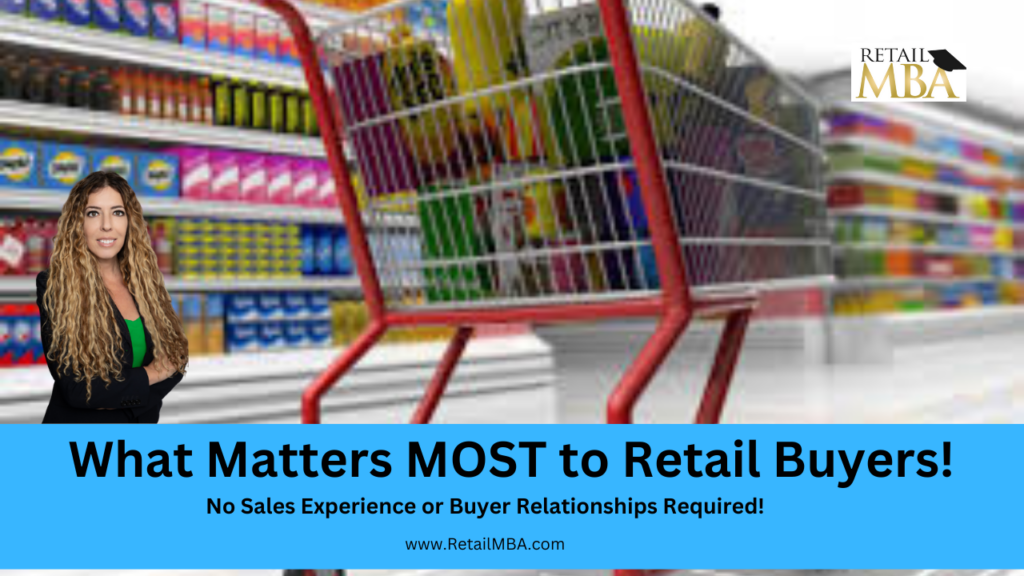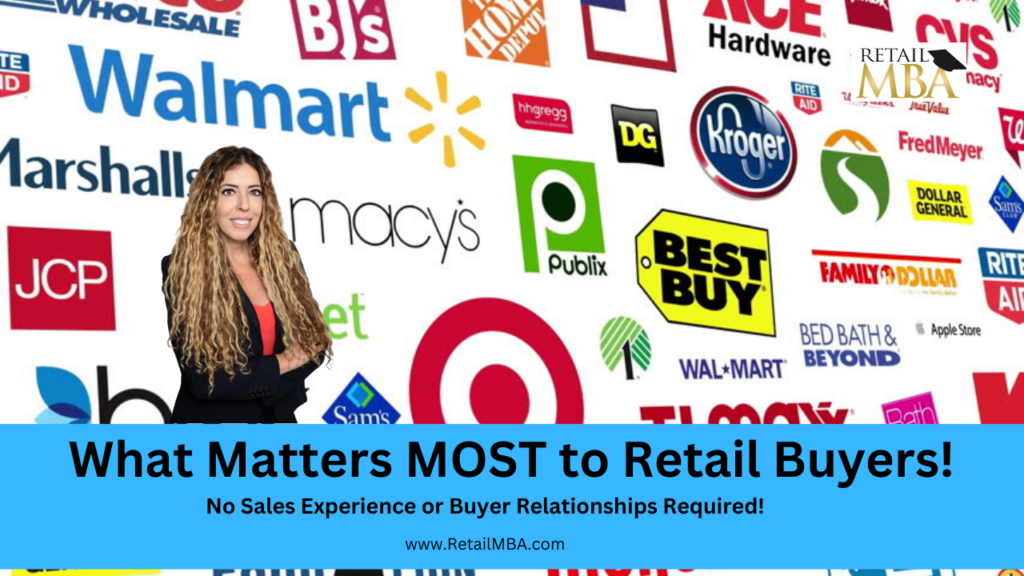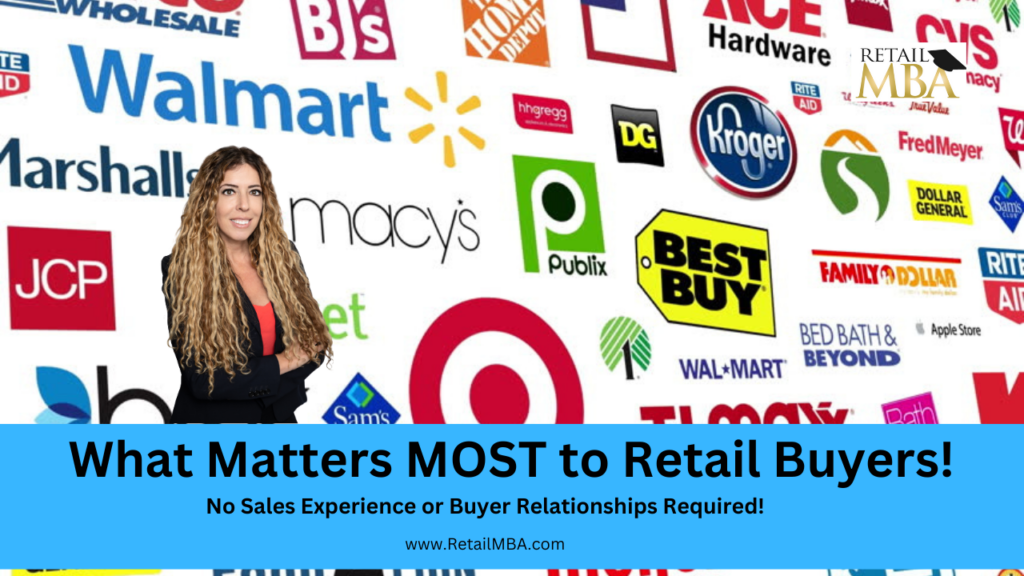Do you have a product perfect for chain stores and want to know what matters most to retail buyers? Karen Waksman, founder of Retail MBA reveals 5 tips and strategies to help you get started today!
Are you interested in getting your product sold in retail chains? If thats the case, it’s crucial to understand what buyers at chain stores care about!
Karen Waksman, the founder of Retail MBA has been teaching people how to achieve this for than 13 years, has personally sold millions of units of products to the worlds largest retailers. In this short video training, Karen shares insights on what buyers consider important and how you can ensure that your product stands out.
Key Considerations for Buyers
When approaching buyers there are six factors to bear in mind;
1. Purchasing agents have the ability to make buying decisions. Therefore it is vital that your product is fully prepared for market with all packaging and pricing requirements properly taken care of.
2. Take a walk through the store shelves. Identify where your product would best fit in. Different buyers are responsible for sections, within the store.
3. Consider how your product can enrich the buyers life or provide added value.
Is there a version of the product they’re selling? Are there any bonus products that can be offered?
Consider the target audience of the buyer. Can you change the packaging to appeal to a group of people?
Keep an eye out for purchases. Is there a product that can be placed near the counter area?
Think creatively. Can you sell your product in a section of the store?
Strategy is crucial
Karen provides an example of how strategy can make a difference. She had a customer who sold cosmetics. Faced competition as everyone was selling similar products. However she noticed that her active customers (such, as athletes and menopausal women) loved her product because it didn’t run or leak. Therefore she decided to revamp her packaging specifically targeting this audience resulting in getting her product stocked in stores.
Understanding Retail Buyers Priorities
The key to getting your product into chains lies in understanding what matters most to buyers. Karen Waksman and Retail MBA specialize in guiding individuals on how to approach stores and even handle all the work on their behalf. They have expertise across product categories. Are available, at every stage of your business journey. If you’re interested, I recommend checking out what they have going on at Retail MBA.
We’re grateful that you took the time to watch our video! Your support means a lot to us.
Outline of "How to Sell Wholesale to Retailers - What Matters Most to Retail Buyers!
Karen Waksman, the founder of Retail MBA has been assisting a number of individuals for, than a decade in understanding how to effectively sell their products to well known retail chains. A common question she receives is what buyers at chain stores prioritize when being contacted. In this article we will explore six considerations to keep in mind when reaching out to these buyers.
Purchasing Agents
First and foremost it’s crucial to recognize that buyers act as purchasing agents with the authority to make product purchases. As a result presenting them with products that are fully prepared for purchase—including packaging and pricing—is of importance. One effective approach is to visit their stores and assess where your product could potentially fit within their inventory. It’s worth noting that different buyers are responsible for sections, within the store. It’s essential to determine the relevant buyer beforehand. Once you’ve identified the buyer evaluate whether your product can address any gaps they may have in their assortment. Remember that buyers often inquire if you have visited their stores so conducting research is vital.
For instance if a retailer is currently selling moisturizers but lacks any eye enhancing products it might be beneficial to pitch your selling eye cream to them.
On the hand you might consider combining your moisturizer with an eye serum, as an added benefit. This would create a product that is priced the same as their moisturizer. By doing this you can attract customers to choose your product over competitors.
Example
Next Karen suggests thinking to develop a selling proposition. By understanding your customer base and conducting market research you may discover a niche market. For example Karen had a customer with cosmetics that were exceptional because they didn’t smudge or leak making them perfect for athletes. By rebranding and targeting this market segment the customer was able to tap into a new source of revenue and successfully place their products in stores.
Buyers Reach Out
Additionally Karen recommends simplifying the buyers task. Buyers lead lives. It’s crucial to provide them with all the necessary information in a clear and concise manner. This includes offering a organized sell sheet, with top quality product images pricing details, packaging specifications and relevant information. By providing buyers with an sell sheet you can streamline their decision making process and increase your chances of having your product stocked on their shelves.
Firstly Karen suggests avoiding assumptions, about the buyers preferences. The effective way to understand what the buyer wants is by asking them. By doing you can customize your pitch to meet their needs and enhance your chances of success. It is equally important to listen to their feedback and make adjustments to your pitch.
Moreover Karen recommends prioritizing the establishment of relationships with buyers. Building relationships requires time and effort. Is crucial for achieving success. You can foster connections by attending trade shows sending personalized emails and following up with buyers. By nurturing these relationships you increase the likelihood of the buyer considering your product even if it may not be a match, for their store.
Finally Karen advises against being overly assertive while pitching your product. Buyers generally dislike feeling pressured. It is crucial to respect their decisions if they decline your offer. Additionally avoid sending samples or excessively following up with them. Instead focus on building connections and making their job more convenient.
To summarize, when communicating with customers at a chain it is vital to offer them products that are readily available, for purchase. Additionally it is important to be creative and come up with a selling point. Making the buyers job easier and asking for their preferences can also contribute to interactions. Building relationships, with customers is crucial while avoiding sales tactics. By adhering to these six principles
Check Out Our Additional Blog Posts Here:
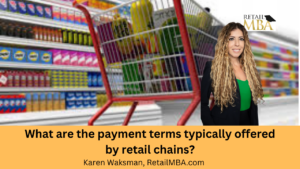
Retail Terms
Retail Terms – What are the payment terms typically offered by retail chains? Click Here to Learn More!
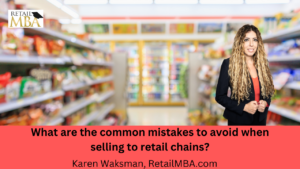
Retail Vendor
Retail Vendor – What are the common mistakes to avoid when selling to retail chains? Click Here to Learn More!
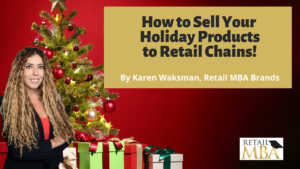
How to Sell Your Holiday Products to Retail Chains
New Training on How to Sell Your Holiday Products to Retail Chains
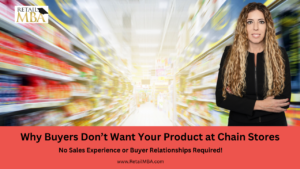
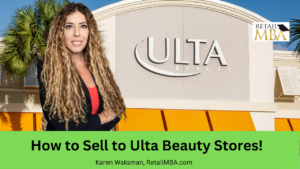
Ulta Beauty Vendor
Ulta Beauty Vendor – How to Sell to Ulta Beauty Stores. Click Here to Learn More!
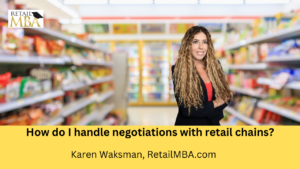
Retail Strategy
Retail Strategy – How do I handle negotiations with retail chains? Click Here to Learn More!

